Marcia Thornton Jones's Blog, page 8
April 22, 2025
Interview with Lori Lobenstine, Author of The Barking Puppy
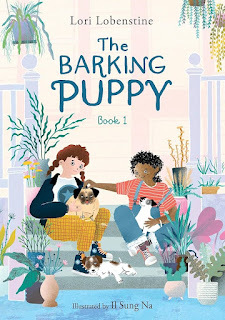
Welcometo Smack Dab, Lori! Please tell us a bit about The Barking Puppy.
Wheneleven-year-old Sophie and her two Jack Russell terriers move to Boston, thefirst neighbors they meet are a quirky teenager named Juno and her breathing-challengedpug, Bonney. They quickly bond over their love for dogs, but making friends atschool isn’t so easy. Sophie is excited to not be the only brown kid, but herclassmates make fun of her Vermont overalls and don’t appreciate the humor ofthe “by-dogs-for-dogs” newspaper that she and Juno are dreaming up. But thenBonney needs surgery, Sophie’s dogs chase a mean neighbor’s hairless cat, andit looks like the Barking Puppy newspaper might never go to print. CanSophie's goal to “think like a dog” help her rescue Bonney, keep her family outof trouble with the landlady, make friends at school, and even challenge the BostonGlobe?
I’vehad pets my entire life. The relationship between Sophie and her dogs, EleanorRigby and Ollie Baba, is so heartwarming. What inspired you to write about thisspecial bond between a young girl and her pets?
I feellike our pets do so much for us in terms of showing us other ways to be in theworld. Even before my goddaughter Sophie and her mom got the Jack Russells,Sophie was a dog person. She could always think like a dog! One time when shewas about four years old, I joked that my dog Herschel never wanted to read hisbirthday cards, because he was so eager for his yummy presents. Without missinga beat, Sophie wedged a dog-biscuit in her card to him so he would open it!Brilliant. Our relationship has always centered our pets, and our shared humorhas always been dog-centric, so TheBarking Puppy is really an extension of that.
Sophiehas a wonderful way of "thinking like a dog" throughout the book. Howdo you think children can benefit from trying to see the world from an animal'sperspective?
Well,as I said, Sophie has really always had that gift, although I didn’t quite havethat language for it. I’ll tell you how the idea came to me, though. In chapterone, Sophie and her mom (and their dogs, of course!) are moving to Boston. I waswriting a list of things that Sophie wanted to do in Boston, because Sophieloves lists. When I got to number 10, I wrote something dumb like “Be brave.”My twin sister is an elementary school librarian, and her eyes almost rolledout of her head. “Every middle grade book with a female protagonist has thattheme,” she complained. Which really gave me pause. What was I trying to say? How wasmy protagonist really going to navigate moving to a new city? So then itoccurred to me how central this could be to her success. Thinking like a dogcould be Sophie’s way of becomingbrave—whether it was meeting other kids or challenging her godmother at the Boston Globe.
 Sophie and Lori
Sophie and LoriTheBarking Puppy newspaper is such a creative concept! What gave you the idea fora "by-dogs-for-dogs" newspaper?
The Barking Puppy is based on a real “by-dogs-for-dogs” newspaper that Istarted with my goddaughter, Sophie, when she was ten! We had a week togetherduring a school break, and we banged it out. Her dog-insights kept me laughing,and I quickly realized how well we collaborated. We shared a love for our dogsand a sense of humor, and a real willingness to “yes-and” all kinds of crazyideas. Article about pug losing her off-leash owner? Check! Dog classifieds? Ohyea! Interviewing dogs on the street? For sure. And ten years later, we’restill like this! We’ve produced six other editions, a handmade Barking Puppygame, mini-documentaries, and now this book series, our video trailer, theaudiobook, the book tour…the list goes on. It’s so fun! (You can see the PDFsof the original Barking Puppy newspapers at our website: http://thebarkingpuppy.com)
Thestory presents Sophie's experiences as a biracial child with sensitivity andauthenticity. How did you approach writing these moments of identity andself-discovery? Why was creating a diverse neighborhood community important forSophie's story?
When mygoddaughter Sophie was eight years old, she and her mom moved from Harlem, NYto Vermont. For a long time, she didn’t have a lot of language around race orthe massive change that she had experienced in terms of community. As I waswriting the book, she was really coming into that language as a high schoolerthere. She shared a video she made of herself talking about her experiences,and it was one of the very first times that we talked about race and what itwas like being brown in Vermont. She ended up experiencing a whole range ofracism there, and she used her amazing sense of humor to call it out. I wasactively working on writing The BarkingPuppy at that time, and so it was important to me to weave in some of thediverse members of my own community in Boston—adults, kids, and dogs. And itwas important to think about what it had been like for me coming of age as awhite girl realizing she was gay. What could we learn from each other, and whyhadn’t we talked more about these things? That is something that Sophie and hergodmother start to explore in the book.
Bonney'shealth crisis drives much of the plot. What made you choose to incorporate thismore serious element into an otherwise lighthearted story?
As alifelong youthworker, I’ve seen so many examples of young people solvingproblems together. I’m also grateful for the countless ways that books help ouryoung people think about and address challenging issues. As I wrote The Barking Puppy, I wanted to choose atopic that would be important to Sophie, the character, and also something thatshe and her teenage collaborator, Juno, could really take on. I really wantedthat to be an element of the book: two girls summoning their creativity, humorand chutzpah to try to raise $3,000 for a pug’s surgery!
There'sa lovely message about embracing one's unique qualities in the book. How do youhope this resonates with young readers?
I’mglad you saw that! I have such a passion for people who are so fullythemselves, who don’t shy away from their oddness, or better yet, who see it astheir super power. At first Sophie’s classmates don’t understand her—from herdog humor, to her old school taste in music, to her “Vermont overalls”. ButJuno, the teenager next door, not only embraces her own uniqueness, but fullysees Sophie’s too. And across her diverse community, Sophie has a lot of rolemodels for this, from her godmother Lori’s odd obsessions, to Rudey telling hernot to let anyone “yuk her yum.” I hope readers really take this in—both interms of embracing their own idiosyncrasies and those of others. And I hopethey notice how Sophie’s new classmates start to value her and appreciate the Barking Puppy newspaper.
Whatwas your favorite scene to write in "The Barking Puppy"?
Gosh, therewere a lot of fun scenes. I’d say I might be able to narrow it down to the bakesale scene at the vet (having to drag poor Summitt across the main lobby isbased on a true story!) and the final scene at the Boston Globe. Once Irealized Bonney the Pug’s key role there, it was on!
Whatdo you hope most that readers will take away from your story?
I hopereaders will laugh out loud, read the books to their dogs, and get inspired totake on issues that matter to them. Maybe they literally start their ownhand-drawn newspaper, or maybe they stand up for their neighbors and classmatesin new ways, or even help their dogs make a case for a bottomless treat drawer!
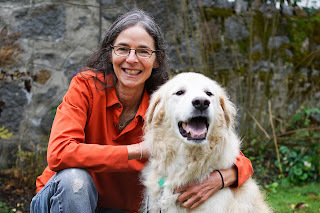
What’snext?
There’sso much going on right now! Our publisher, Levine Querido, asked the realSophie to narrate The Barking Puppyaudiobook, so I’ve had the pleasure of sitting in on her amazing recordingsessions. Which is so much fun! We are also actively planning our local (andregional) book tour, as well as trying to learn the best ways to get The Barking Puppy in as many hands (andpaws) as we can. I’m also working on Book 3!
Wherecan we find you?
Our website, http://thebarkingpuppy.com,has a book trailer, activities for readers, photos of the real dogs and humansthat the book is based on, as well as the actual Barking Puppy newspapers. (Plus updates on Sophie and Lori’s booktour, class visits, and more.) We’re also on YouTube and IG at: @TheBarkingPuppyBook
April 15, 2025
The Mechanics of Poetry
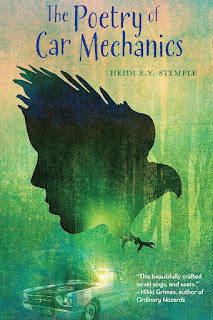
It’s true, I do not write poetry, not since I dappled in theforlorn of teen angst a few millennia past. But every writer worth their salt and pepper reads, and studies, the mechanics of poetry. Recently, I came across a real treat in thisongoing study: Heidi Stemple’s The Poetry of Car Mechanics.
Why Should Writers Study Poetry?
Poetry Encourages Economy of Language. Poetry demands clarityand potency and the stripping away of any linguistic excess. In this way, themechanics of poetry distills complex emotions, allowing for a deeper expressionand engagement with the younger, reluctant reader.
Poetry Demands Precision. It demands the writer to move awayfrom the generic and the cliché to encourage the more creative expression thatturn cliches on their heads, and twist tired tropes into the unexpected. Young readers love surprises.
Poetry Unlocks the Power of Imagery. Poetry breathes lifeinto the abstract by using metaphor, simile, and focusing on sensory details.By focusing on these details, poetry reflects the beauty of finding theextraordinary in the ordinary.
Heidi Stemple and the Poetry of Car Mechanics
Heidi Stemple’s verse novel is an exquisite study of complicatedfamilies and self-discovery. It follows the story of 15-year-old Dylan,abandoned by his mother and now raised by his grandfather. Alone and isolatedin a small town, and feeling broken by life, he seeks solace in the woodsbehind his grandfather’s auto shop. Here, among the trees, he writes poetry and studies birds. Then oneday, he finds an injured hawk. It’s a race against time as he seeks help for theinjured bird. And in the process, he finds his way to rescue his own brokenparts.
In celebration of the release of her book, Heidi reads someof the poetry that “Dylan” wrote. Teachersand parents have long known that poetry is meant to be read aloud, giving voiceto experience the rhythm of the sense and sensibility of the story itself.
In this clip, Heidireads I Am No Waxwing, in which Dylan describes himself and the other kids inschool:
In this clip, Heidi reads The Most Alone :
In this clip, Heidi reads Awe:
You can find more clips of Heidi reading Dylan's story on YouTube and on her Facebook Page. For more about her Heidi and her books, check out herwebsite: https://www.heidieystemple.com/index.html
You can buy Heidi Stemple’s book, The Poetry of CarMechanics, at your favorite bookstore!
Thank you for reading!
Bobbi Miller
April 12, 2025
Celebrate Poetry Month With a Classic by Darlene Beck Jacobson
As poet extraordinaire IRENE LATHAM reminded us earlier this month, April is NATIONAL POETRY MONTH. While I do not consider myself a poet, I enjoy reading it and finding great books of poetry that I can recommend to children.
I am also reminded of one very special book of poetry from my own childhood that has occupied a space on my shelf since I purchased it back in 1970.

A. A. Milne, creator of the beloved characters Winnie the Pooh, Tigger, Eyeore and the other creatures of the Hundred Acre Woods, wrote this charming collection of poems in 1924.
They delighted me with their whimsy, curiosity, and sweet wonder when I first discovered them. And they continue to delight me today.
Like all good books of poetry, there is one that stood out to me and became my favorite.
HALFWAY DOWN

Halfway down the stairs
Is a stair where I sit.
There isn't any
Other stair
Quite like
It.
I'm not at the bottom,
I'm not at the top;
So this is the stair
Where
I always
Stop.
Halfway up the stairs Illustration by Ernest H. Shepard
Isn't up,
And isn't down.
It isn't in the nursery,
It isn't in the town.
And all sorts of funny thoughts
Run round my head:
"It isn't really
Anywhere!
It's somewhere else
Instead!"
If that doesn't capture the amazing "wonderings" of childhood, I don't know what does.
Darlene Beck Jacobson loves sitting halfway down, thinking about important things like why rainbows have all the colors, what would happen if people had wings and could fly, and why strawberries taste the sweetest right after it rains.
April 11, 2025
Positive Space
 This, a most iconic graphic, was my introduction to negative space. It took me a few blinks until I saw the faces. Wait, maybe it was the vase. I can’t remember because now I see both.
This, a most iconic graphic, was my introduction to negative space. It took me a few blinks until I saw the faces. Wait, maybe it was the vase. I can’t remember because now I see both.
 This, while not iconic, is such a common piece of negative space. The thoughts at the top? Bring it! The white space that follows? Negative? Hmm. It’s all in how you look at it.
This, while not iconic, is such a common piece of negative space. The thoughts at the top? Bring it! The white space that follows? Negative? Hmm. It’s all in how you look at it. Sure, some would jump to thoughts of writer’s block.
Me? I leap to the possibilities. Is it a blanket of snow? Sun-drenched sand on a beach? The next gen of whitewash from Tom Sawyer?
Or, is it the opportunity to craft my favorite piece of writing yet? Yes, yes, yes, yes.
And yes, I’m positive.
Jody Feldman, award-winning author of The Gollywhopper Games series and The Seventh Level needs to remember that some of her characters won't necessarily be that positive. It makes for a boring read!
April 9, 2025
Interview With Nancy McCabe, Author of Fires Burning Underground
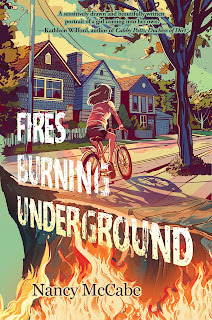
Welcome to Smack Dab, Nancy. Please tell us a bit moreabout Fires Burning Underground.
It’ s Anny’ s first day of middle school and, after years ofbeing homeschooled, her first day of public school ever. In art, Larissa askswhat kind of ESP is her favorite: telepathy, clairvoyance, precognition, ortelekinesis? Tracy asks how she identifies: gay, straight, bi, ace, pan, trans,or confused? And thus kicks off a school year for Anny in which she’ llnavigate a path between childhood and adolescence, imagination and identity. Ina year of turmoil and transition, with a new awareness of loss after the deathof a friend, Anny struggles to find meaning in tragedy, to come to terms withher questions about her sexuality, and to figure out how to negotiate her ownever-shifting new friendships. And when her oldest friend’ s life is in danger,she must summon up her wits, imagination, and the ghosts that haunt her to savethem both.
The title’s a powerful one, as the metaphor of firesburning runs throughout the novel. Could you please talk about this imagery abit and how it relates to Anny’s journey?
Two literal fires bookend the story—the fire that killsAnny’s Sunday School classmate at the beginning, and the fire at the end thatforces Anny to think quickly and take action. In addition, images of fire arealways burning in Anny’s subconscious as she tries to make sense of herfriend’s death and the fears that result. But there are so many thingssmoldering below the surface for Anny—her passions for art and for friendshipthat don’t always have an outlet, her definition of who she is in relation to thereligious environment in which she was raised and as she stands on the brink ofadolescence, torn between the task of understanding herself and finding someway to name who she is that the rest of the world will understand.
I was fascinated by the intersection of faith andidentity–could you talk a bit about what made you want to weave these threadstogether, as Anny questions both her own sexuality and her religiousupbringing?
Faith and identity were quite honestly the sources of hugequestions for me at Anny’s age. The religious faith of my parents and churchoften seemed to be actively working to alter if not cancel my identity andshape me into a different kind of person. There wasn’t a lot of room for a quietgirl who had a strong sense of self and an innate inability to be dishonestabout who she was. I struggled to reconcile my own questions about faith andidentity, and wanted to examine those things through Anny. She uses morecontemporary language and ideas to express herself, but she shares mypre-adolescent combination of confidence and self-doubt.
Similar issues are so ubiquitous for the college students Iteach. They write about their conflicted ideas about religious upbringings.They often feel out of place because of a variety of factors: creative spirits,choices about sexual identity, mental health challenges. Religion and identityquestions are often closely intertwined.
As an offshoot to that, I was also intrigued by yourrepresentation of supernatural elements, such as the Ouija board. What made youinclude the supernatural alongside spiritual explorations?
When I was young, I was terrified of being haunted. Ateight, after my maternal grandpa died, I slept with my hand under my pillow toblock out the sound of his voice if his ghost tried to speak to me, and, likeAnny, I had a superstition about eating using his silverware. Much of Fires isbased on a year-long period when I was young, also bracketed by two fires, andan intense friendship that, looking back, was really the last one completelydominated by childhood concerns, imagination and creativity and games anddreams. We did play with the Ouija Board and were completely sucked in by ourbelief in the supernatural—another source of nightmares for me when I fearedthat the boy who’d died might speak to me. I changed much of what reallyhappened with my own Ouija board experience to serve the story better, but asfor me it becomes a symbol for the subtle beginnings of Anny’s rebellionsagainst her parents’ beliefs, her questions about them, and her process offinding her own power.
I’m a sucker for voice, and was impressed by the way youmanaged to deal with such really adult topics (death, sexuality, family issues)while maintaining a true-to-life MG voice. How did you strike the balance?
I had always written for adults when I started this book, sothis was a new challenge for me. An editor I worked with at a conferenceimpressed on me the importance of finding Anny’s voice. I read and reread a lotof middle grade fiction, listened to the way my daughter talked at that age,and went back to my sparse childhood diaries. I took many passes through themanuscript, looking at each sentence, trying to tune into Anny: how would shesay this? It was important to back off and let Anny’s voice take over.
The character of Robert dies early in the story butcontinues to maintain significance throughout. Was that difficult keepingsomeone in the text who isn’t present to interact with the characters?
Since the story is more about Anny’s reaction to her firstencounter with a peer’s death than about Robert himself, who she acknowledgesshe didn’t know very well, I’m not sure we ever find out much about Roberthimself. I deliberately left some questions open-ended, like is she reallyinteracting with him? How much of this is a function of her imagination? Isthere something supernatural going on? Just as young people have to make theirown decisions about questions of faith since there are no definitive answers, Iwanted young readers to be able to ponder the ambiguities of the supernaturalexperiences and decide for themselves.
I was intrigued by the presentation of art and music.What made you want to include creativity as a powerful force in the story?
Creativity and imagination, art and books are central toAnny just as they have always been central to me. Like Anny, I cared way moreabout those things than I did about gossip and crushes (and even when myhormones kicked in rather powerfully, I still felt most alive when reading agood book or creating something of my own.) Like Anny, I had many artisticimpulses and lacked the skill to execute most of them. I thought you had to begood at things to do them—like Anny, I made rugs and skirts and pillows, playedthe piano, got stuck in honors art where I felt totally out of my element,wrote stories and poems. But Anny doesn’t necessarily have to be good at thesethings to find power and refuge in them. I think that her ability to do thatand connect to others through art and writing are always going to be moreimportant to her than the labels she accepts for herself.
The novel explores different types of friendships. Whatdo Anny’s relationships with Larissa and Ella reveal about her journey?
Ella represents home and safety; Ella has also beenhomeschooled and is Anny’s oldest friend. Anny at once values the friendshipand finds it unsatisfying. But Ella isn’t staid or conventional any more thanAnny is. Ella is curious, she’s the catalyst for pushing them both out into theworld when she announces she’s going to public school, and she’s also sure ofwho she is. She’s always been a stabilizing force for Anny. But for Anny,Larissa represents the attractions and dangers of the outside world, someonewho is like Anny in some vital ways but also wants to try on differentidentities and dreams and lacks Anny’s fears. Anny comes to understand that sheneeds what both of her friends represent.
This is a scary time for so many sectors of society,especially LGBTQ+ youth. What might you say to them? What did you want toimpart with Anny's relatively optimistic ending?
Anny’s mother makes it clear that she will grudgingly accepther daughter no matter what choices she makes, but it’s in adon’t-ask-don’t-tell kind of way. Her interpretation of religious faith maycontinue to create obstacles for Anny. But what I wanted to emphasize is Anny’sstrong, creative spirit that is going to plow forward no matter what, becauseshe really doesn’t have any choice but to be who she is.
This is indeed an alarming time. When some sectors seek tolimit LGBTQ+ youth, I believe we need to produce and embrace a broad range ofaffirming art and literature. I fully believe that books can change our lives.I hope that young people will seek out allies and stories and role models thatencourage them to explore and express their identities and understand that noone has the right to try to change them.
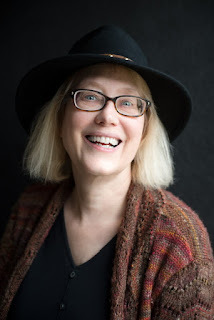
What’s next?
I’m in the process of shifting from teaching to writingfull-time. I’d like to do another middle grade novel from Larissa’s point ofview. I’d like to explore what happens to Anny as well. I’ve been also workingon a sequel to my young adult time travel novel Vaulting through Time.I’m almost done with a collection of essays about a mysterious illness mydaughter experienced as a teenager. I’m like Anny—I have a zillion projects Iwant to work on and I’m excited about all of them.
Where can we find you?
My website is at https://www.nancymccabe.net.
Pre-order a copy of Fires Burning Underground
April 8, 2025
NEGATIVE SPACE by Jane Kelley

As I create my stories, I try to make sure there's darkness and light. A dark silhouette can only be revealed by a light.
In this photograph (taken by our friend Julie Coash), my husband Lee and I were in Rajasthan, India. Its contrasts make me think about this Mahatma Gandhi quote.
Seven blunders of the world that lead to violence: wealthwithout work, pleasure without conscience, knowledge without character,commerce without morality, science without humanity, worship without sacrifice,politics without principle.
@font-face {font-family:"Cambria Math"; panose-1:2 4 5 3 5 4 6 3 2 4; mso-font-charset:0; mso-generic-font-family:roman; mso-font-pitch:variable; mso-font-signature:-536870145 1107305727 0 0 415 0;}@font-face {font-family:Aptos; panose-1:2 11 0 4 2 2 2 2 2 4; mso-font-charset:0; mso-generic-font-family:swiss; mso-font-pitch:variable; mso-font-signature:536871559 3 0 0 415 0;}p.MsoNormal, li.MsoNormal, div.MsoNormal {mso-style-unhide:no; mso-style-qformat:yes; mso-style-parent:""; margin:0cm; mso-pagination:widow-orphan; font-size:12.0pt; font-family:"Aptos",sans-serif; mso-ascii-font-family:Aptos; mso-ascii-theme-font:minor-latin; mso-fareast-font-family:Aptos; mso-fareast-theme-font:minor-latin; mso-hansi-font-family:Aptos; mso-hansi-theme-font:minor-latin; mso-bidi-font-family:"Times New Roman"; mso-bidi-theme-font:minor-bidi;}p.script, li.script, div.script {mso-style-name:script; mso-style-unhide:no; mso-style-qformat:yes; margin:0cm; mso-pagination:widow-orphan; font-size:12.0pt; font-family:"Times New Roman",serif; mso-fareast-font-family:Aptos; mso-fareast-theme-font:minor-latin; mso-bidi-font-family:"Times New Roman"; mso-bidi-theme-font:minor-bidi;}.MsoChpDefault {mso-style-type:export-only; mso-default-props:yes; font-family:"Aptos",sans-serif; mso-ascii-font-family:Aptos; mso-ascii-theme-font:minor-latin; mso-fareast-font-family:Aptos; mso-fareast-theme-font:minor-latin; mso-hansi-font-family:Aptos; mso-hansi-theme-font:minor-latin; mso-bidi-font-family:"Times New Roman"; mso-bidi-theme-font:minor-bidi; mso-font-kerning:0pt; mso-ligatures:none;}div.WordSection1 {page:WordSection1;}Gandhi doesn't mention art. Is it gratuitous to think of art when these blunders are causing actual violence?
I don't think so. As a writer, I must consider work, conscience, character, morality, humanity, sacrifice, and principle. I take the responsibility of writing for children very seriously.
Gandhi doesn't say that there shouldn't be wealth, pleasure, knowledge, commerce, science, worship, or politics. He says that these things are dangerous without something to deepen them. To balance them. To ground them.
But there shouldn't be work without wealth either. We deserve to get paid. We should be learning. We need science and politics and commerce to get things done. And we especially need pleasure, a hope of reward. Why not call it fun!
That's another responsibility for a children's book author. Inspiring laughter and awe and love for whoever or whatever -- including chocolate-chip cookies.
Jane Kelley is the author of many FUN and thought-provoking children's books--including Nature Girl. Megan has been hiking the Appalachian Trail now for 15 years!!!

April 4, 2025
Interview with Maria Scrivan, Author and Illustrator of Nat a Chance

Welcome to Smack Dab, Maria! Please tellus a bit about Nat a Chance.
Thank you, I’m happy to be here!
Nat a Chance is the sixth book in the Nat Enoughgraphic novel series. Nat is sure she’s not an athlete. She’s either falling onher face, in the nurse’s office, or both. She considers herself a failure atevery sport, and is consistently picked last for gym. After a few mishaps, herbest friend, Zoe, persuades Nat to join her to train for a triathlon. This isway out of Nat’s comfort zone; so much so that on the first day of training shetells the coach that she doesn’t belong there because she’s not an athlete. Thecoach responds, “that’s just a story you’ve been telling yourself, don’tbelieve it.” Nat a Chance is about the stories we tell ourselves, and whathappens when we challenge those false beliefs.
I’m a total sucker for a humorous voice,so of course I fell in love with Nat on page 1. How’d you tap into MG humor?
When I first had the idea to write Nat Enough, I just started writing vignettes of things thathappened in middle school, without having any idea where it was going. The moreI wrote, the more I realized that while many things that had transpired werenot funny at the time, years later there was a lot of great material in all ofthe mishaps and life lessons along the way. Having a syndicated comic for overa decade taught me to look at life through the lens of humor, and I appliedthat same filter to my middle grade experiences. It was exceptionally catharticto relive those experiences with an entirely different perspective.
I can also empathize with and relate toNat. I've always been the completely non-athletic bookworm. You speak quite abit in the Author’s Note about not being an athlete, either. Can you say a bitabout those limiting stories we tell ourselves?
I share the same story as Nat, that I wasn’t an athlete, and Icarried that to college when some friends invited me to join the rowing team.This was so far out of my comfort zone, extremely challenging, and fostered alife-long love of sports, and a realization that the story that I wasn’t anathlete was entirely false.
We are so used to hearing messages about who we are from ourselves,our parents, friends, teachers, and often adopt these ideas as our own withoutquestion.
We can carry a story around for a long time — whether we’re not anathlete, we’re bad at math, can’t sing, or think we’re shy. Those thoughtsbecome beliefs, and those beliefs shape our reality, and our definition of whowe are. I have done so much research about how much our words and thoughtsmatter, and this book was written as a reminder to myself to be mindful aboutthe internal language I use to describe who I am.
In the beginning, it’s friendship thatmotivates Nat. Friendships are so incredibly important at this age. Howimportant was friendship in actually crafting Nat’s character?
Friendships are especially volatile and challenging during middleschool. In Nat Enough, Nat’s bestfriend from second grade, Lily, no longer wants to be friends once they get tomiddle school. I had this same experience, and while devastating at the time, Irealized the importance of surrounding myself with people that lift me upinstead of put me down. Nat learns a lot about herself through her closestfriendships. Zoe gently guides Nat out of her comfort zone, Flo is always thereto offer wisdom, and Luca becomes her partner in creating a comics club in Natfor Nothing. Through their own kindness, and willingness to show up for her,Nat’s friends teach her to be a better friend by example.
I also enjoyed how Nat lists being Zoe’straining partner as just another impossible thing in her life. The book reallychallenges the concept of natural talent. What did you want young readers toknow about innate ability?
I think the idea of innate ability can also be a limiting belief,and can stop us before we even begin to try. Nat a Chance explores the concepts of perseverance anddetermination. There is so much power in just showing up, and letting each ofthe next steps be revealed to us along the way. I loved exploring the idea of“impossible things” both in the main story and in the Nat in Wonderlandmini-comic at the end. I know from personal experience that stepping out of ourcomfort zone and achieving one ‘impossible thing’ opens the doors to realizingso much more is possible than we imagined.
I also enjoyed the way Nat battles doubtsand struggles with training throughout, asking herself, “Why is this funagain?” How did you go about depicting how really hard it can be to perseverewhile maintaining an encouraging tone?
Growth is hard! Especially when we're moving out of our comfortzone and trying something new. I've been in that place so many times in mylife, and have realized time and time again that the greatest growth comes fromthe biggest challenges. The encouraging tone comes from knowing that there is areason for the challenge, and even if I don't want to have that experience atthe time, I always know that I am stronger for it.
I’m an author who recently got back intoart. Any drawing tips for the young or young at heart?
My best advice is to draw a lot and read a lot of illustrated booksand comics. Keep a sketchbook with you at all times for any tiny moment thatyou have to yourself. Waiting for a friend at a coffee shop or being in awaiting room is a great opportunity to draw. Participate in events likeInktober and Hourly Comic Day to help create self-imposed deadlines. Above all,have fun. Art is meant to be joyful. There are no mistakes in art. Each drawingleads to the next drawing, no matter what happens on the page. Every time thepencil hits the paper, it’s an entirely new adventure.
Often, I find graphic novelists arefrequently more tightly organized plotters than writers. How did you go aboutplotting Nat a Chance?
Once I know what the story is, I start out by writing a briefoutline that only takes about three pages. This is purely a roadmap, in thesame way that on a road trip I know where I’m headed but have no idea what I'mgoing to see along the way. Watching what develops is the magic of writing. Ilike to have a basic idea of what the plot points are, but I never really knowwhat will happen in the story, until I start sketching. My first draft is roughdrawings of the entire book. I sketch as much detail as I can includingexpressions, body language, and dialogue. I work best to write and drawsimultaneously.
The end of the book also doesn’t stopwith the race. We see how life changes for Nat after conquering this goal. Whatdid you want young readers to see with this extended resolution?
My hope is that readers realize they have the agency to changetheir thoughts and beliefs about themselves to remove self-imposed limitationsof what is possible. I also hope that readers laugh, have fun, and realize theyare not alone in their feelings.
What’s next?
I have a few projects that I’m so excited to talk about but can’tannounce just yet. Keep an eye out on social media @mariascrivan for moredetails, coming soon!
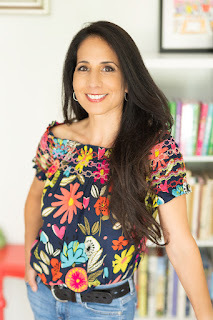 Photo Credit: Kyle Norton
Photo Credit: Kyle Norton
Where can we find you?
You can find me at http://www.mariascrivan.com as well as@mariascrivan across all social media. If you’re looking for me in person, I’mat my drawing table, in a coffee shop, or running on the trails in the nearbywoods.
~
Maria Scrivan is a New York Times bestselling author and award-winning syndicatedcartoonist.
The first book in her graphic novel series, Nat Enough (Scholastic/Graphix),launched on April 7th, 2020, became an instant New York Times bestseller. It was followed by: Forget Me Nat, Absolutely Nat, Definitely Nat, Nat for Nothing, andAll is Nat Lost. Nat a Chance will be available in Spring 2025. She is also acontributor to Marvel’s Super Storieswhich released in October 2023.
Website: https://www.mariascrivan.com/
Instagram: @mariascrivan
Facebook: Maria Scrivan
April 3, 2025
Let's Celebrate National Poetry Month!
 April is a wondrous month. Things are blooming, and poetry is being celebrated everywhere!
April is a wondrous month. Things are blooming, and poetry is being celebrated everywhere! For a Roundup of poetry fun happening in the Kidlitosphere, be sure to visit Jama's Alphabet Soup.
Also don't miss poet & educator Michelle Schaub's POETRY BOOST series, which features a new POEM SHARE video each day of the month.
Tuesday, April 1: Padma Venkatraman
Wednesday, April 2: Suzy Levinson
Thursday, April 3: Matt Forrest Esenwine
Friday, April 4: Eileen Meyer
Monday, April 7: Jolene Gutiérrez
Tuesday, April 8: Irene Latham
Wednesday, April 9: Michelle Schaub
Thursday, April 10: Eric Ode
Friday, April 11: Lee Wardlaw
Monday, April 14: Lisa Varchol Perron
Tuesday, April 15: Laura Purdie Salas
Wednesday, April 16: Marjorie Maddox Hafer
Thursday, April 17: Rebecca Gardyn Levington
Friday, April 18: Marilyn Singer
Monday, April 21: Joseph Bruchac
Tuesday, April 22: Buffy Silverman
Wednesday, April 23: Alan Katz
Thursday, April 24: Leslie Bulion
Friday, April 25: Darren Sardelli
Monday, April 28: Patricia Toht
Tuesday, April 29: Charles Waters
Wednesday, April 30: Amy Ludwig Vanderwater
As for me, I have created a Poetry Machine! Basically it's a 25-cent gumball machine that I've converted. Each pod contains a wee poem! So it's kind of like a fortune cookie...you never know what you're going to get. FUN! I'm super-grateful to Pink Porch Market and Charlie B's in Oneonta, Alabama, for giving the Poetry Machine a home during April!
How will you celebrate poetry this month??
April 2, 2025
Spring Reading
Spring Reading
The cherry blossoms in my neighborhood are in full bloom and spring is here, solet’s take a look at some new middle grade novels! On my blog, Book Q&Aswith Deborah Kalb, I’ve interviewed various middle grade authors, includingMaria Scrivan, Suma Subramaniam, Janet Sumner Johnson, Sylvia Liu, and AllieMillington. Here’s what they had to say…
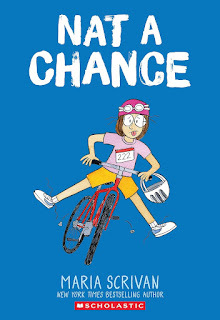
MariaScrivan’s new novel, Nat a Chance, is the latest in her Nat Enough series. Iasked if her character Nat has changed over the course of the series, and shesaid: “Nat is a lot likeCharlie Brown, except she pulls the football from beneath herself. Nat isgetting more confident and comfortable in her own skin, but she still has roomto grow as life continues to bring new challenges. Although Nat was based on mychildhood self, the character has taken on a life of her own, and has becomeone of my greatest teachers. Each book is a letter and reminder to myself to bemore of who I am, to move through doubt and fear, and to believe in myself.”
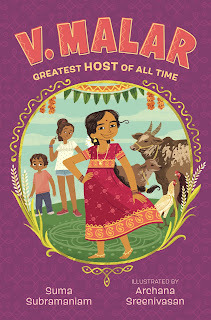
Suma Subramaniam is the author of thenew novel V. Malar: Greatest Host of All Time. She said: “The inspiration for this story came from my childhood. WhenI was a child, my parents were committed to making seasonal festivals a familytradition. Pongal is a four-day celebration in South India when crops areharvested in mid-January. It is celebrated every year in many Indian householdsduring the Tamil month called Thai, in honor of the work farmers do. Theharvest festival symbolizes a season of hope and renewal. It marks the end ofthe winter solstice and the beginning of the sun’s six-month journey up toEarth’s Northern Hemisphere.”

Janet Sumner Johnson’s new novel,Fault Lines, is a sequel to her novel The Winterton Deception. I asked her ifshe knew how her new book would end before she started writing or if she’d made alot of changes, and she said, “I suppose the better question is 'whatdidn’t change?' The talent show was always planned to be there. But even withthat, I ended up adjusting several of the talents by the final draft givebetter emphasis to the book's themes. I don’t want to give away the ending forthose who haven’t read, but the basic plot building to the climax never changed(even if specific scenes within that did). Until a book is written, it’s hardto see exactly what’s needed for the plot to work, so revision and changes area big part of the magic that is storytelling.”
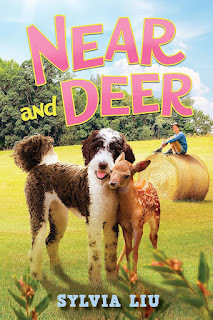
Sylvia Liu’s new novel is Near and Deer. Of its inspiration,she said, “My wonderful Scholastic editor Maya Marlette and I develop my animalfriendship stories together. She came up with the premise of a dog befriendingan abandoned fawn and the girl who wants to take care of it, and I filled inthe details of what Sienna is like, her family environment (her family runninga bed and breakfast in central Virginia), and the new friends she makes(including a boy and his forest scientist mom). Sienna’s main trait is her needto stay in control, which stems from some anxiety, and she has to learn to letgo and trust others to help her with Persimmon, the fawn. I created Sienna bythinking about how someone like her would react to the situations I put her in,relying on my experiences, observation, and research.”
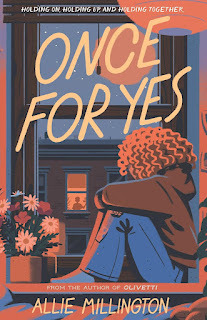
Allie Millington is the author of the new novel Once forYes. I asked her about why a building is a character in the book, and she said,“I’ve always been drawn to writing from unique perspectives, especially objectsthat hold memories and meaning for people. I thought having an apartmentbuilding as a narrator would be interesting, not only because they hold meaningfor many people, but they are also full of stories themselves. Though using anon-human narrator certainly has its challenges, I also find it endlesslyenjoyable trying to see the world from a new lens. I think that’s where empathyplays a big part within my writing.”
Happy reading!
--Deborah Kalb
@font-face {font-family:"Cambria Math"; panose-1:2 4 5 3 5 4 6 3 2 4; mso-font-charset:0; mso-generic-font-family:roman; mso-font-pitch:variable; mso-font-signature:-536870145 1107305727 0 0 415 0;}p.MsoNormal, li.MsoNormal, div.MsoNormal {mso-style-unhide:no; mso-style-qformat:yes; mso-style-parent:""; margin:0in; mso-pagination:widow-orphan; font-size:16.0pt; font-family:"Times New Roman",serif; mso-fareast-font-family:Arial; mso-fareast-theme-font:minor-latin; mso-font-kerning:1.0pt; mso-ligatures:standardcontextual;}.MsoChpDefault {mso-style-type:export-only; mso-default-props:yes; font-size:16.0pt; mso-ansi-font-size:16.0pt; mso-bidi-font-size:16.0pt; mso-fareast-font-family:Arial; mso-fareast-theme-font:minor-latin;}div.WordSection1 {page:WordSection1;}
April 1, 2025
News
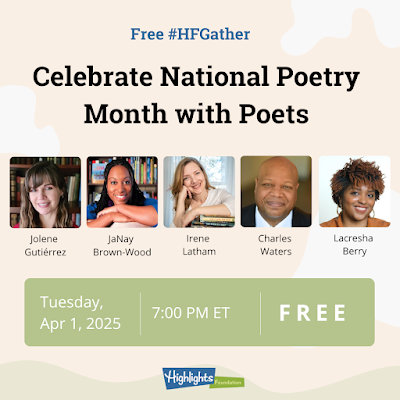
To get National Poetry Month started off right, you're invited to a FREE celebration of all things poetry! Join the #HFGather here.



